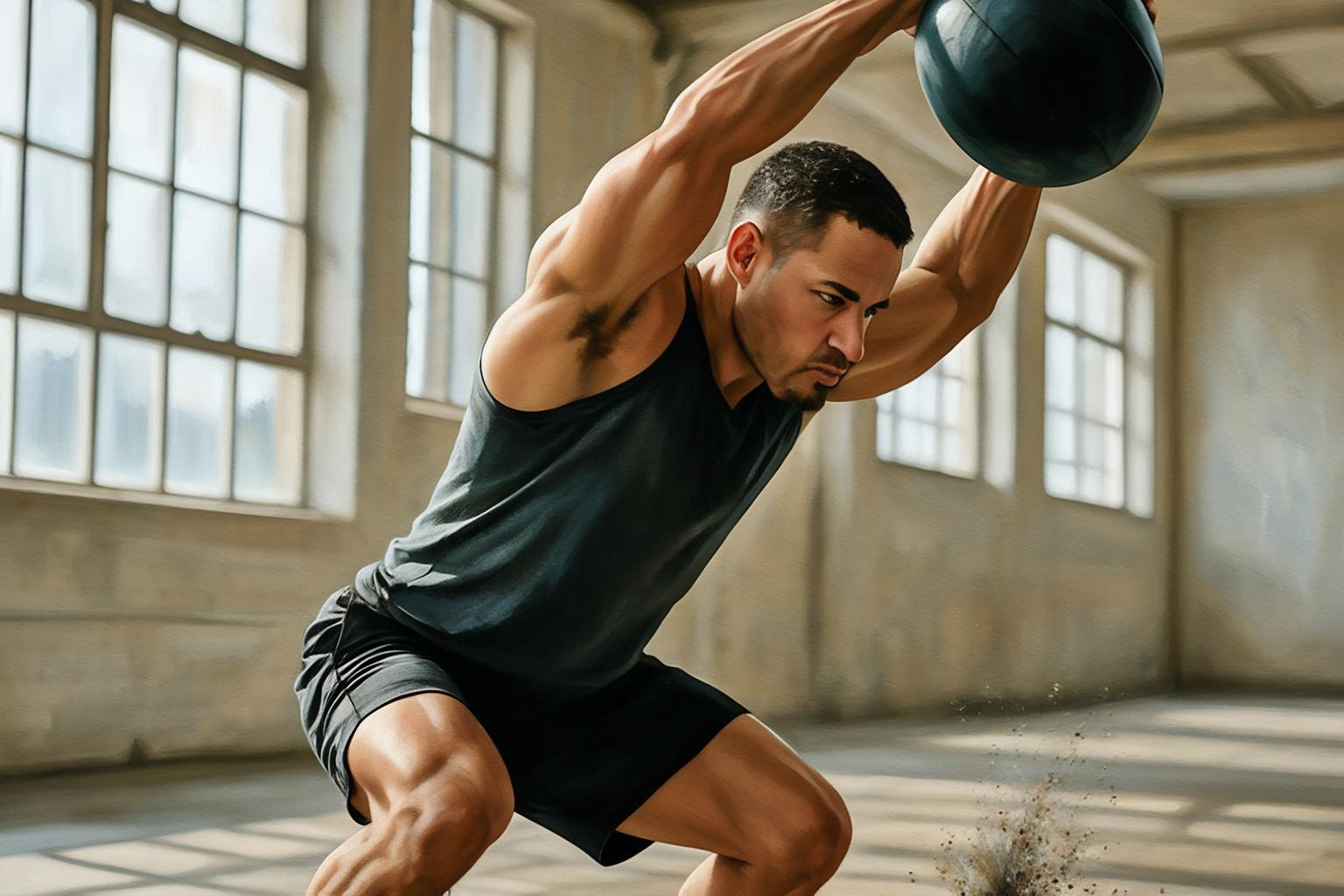Unlocking Throwing Strength: Targeted Workouts for Peak Performance
Throwing strength is more than just raw power—it’s the foundation of athletic performance in many sports, from baseball to track and field. Whether you’re an athlete aiming to improve your throwing distance or precision, the key to success lies in the way you train. This article will guide you through the most effective workouts specifically designed to enhance throwing strength. By focusing on key muscle groups and incorporating explosive movements, you’ll be able to develop the strength and technique necessary to unlock your full throwing potential.
The Science of Throwing Strength: Understanding the Mechanics
Before diving into the workouts, it’s essential to understand the mechanics behind throwing strength. Throwing power doesn’t simply come from the arm or shoulder—it’s a full-body movement that starts from the ground up. The legs, core, and upper body all work in harmony to generate the force needed for an explosive throw. When you throw, your body stores energy in the lower body and transfers it through the core and upper body into the arm. The more efficient this transfer of energy, the greater your throwing strength. Understanding this chain of energy transfer helps highlight why total-body strength training is critical for improving throwing power.
Strengthening the Core: The Engine Behind Powerful Throws
The core is often referred to as the powerhouse of the body, and for good reason. A strong core not only provides stability, but it also facilitates the transfer of force from the lower body to the upper body. Without a solid core, your throws will lack power and precision. Core strength training exercises are essential for throwing strength. Planks, side planks, Russian twists, and cable rotations are excellent ways to target the muscles of the core. These exercises will help you develop the rotational strength and stability necessary for powerful throws. Another vital aspect of core training is building endurance. While explosive movements are important, a well-developed core will allow you to maintain stability through the duration of each throw. Training the core with a mix of static holds and dynamic movements is key.
Building Lower Body Power for Explosive Throws
The legs are the starting point for every powerful throw. They generate the initial force that drives the entire body forward, transferring energy through the torso to the throwing arm. Strong legs also help maintain balance, stability, and control during the throwing motion. To develop lower body power, incorporate exercises like squats, lunges, and deadlifts into your workout routine. These compound movements work multiple muscles in the legs, hips, and glutes, helping you build strength in the muscles responsible for driving the body forward during a throw.
Plyometric exercises, such as box jumps, jump squats, and bounding, are particularly effective for developing explosive power. These exercises focus on improving fast-twitch muscle fibers, which are key for generating the speed and force required for a powerful throw. In addition to strength training, it’s important to incorporate agility drills that improve coordination and balance. Ladder drills, cone drills, and lateral hops will help develop quick footwork and the ability to rapidly change direction, which is essential when throwing on the move.
Upper Body Strength: Fine-Tuning the Final Push
While the legs and core generate much of the power for a throw, the upper body is responsible for delivering the final push. Strong arms, shoulders, and back muscles help propel the object and provide control during the release. Developing upper body strength enhances both throwing velocity and accuracy. Exercises like the overhead press, bench press, and rows are effective for building the shoulders, chest, and back. For optimal throwing strength, it’s essential to focus on exercises that mimic the throwing motion, such as rotational presses and cable throws. These exercises engage the muscles used during the throw, allowing for a more specific strength development. Additionally, don’t forget about the forearms and wrists. Grip strength plays a huge role in the final snap of a throw. Exercises like wrist curls, farmer’s walks, and dead hangs will help you develop the forearm strength necessary for a controlled release.
Explosive Movements: Training for Speed and Power
Throwing is not just about strength—it’s also about speed. The faster you can generate force, the greater the throwing distance and velocity. To enhance speed, you need to focus on explosive movements that engage the fast-twitch muscle fibers. Incorporate exercises such as medicine ball slams, jump throws, and kettlebell swings into your workout routine. These exercises are designed to improve power generation and explosiveness, key elements in maximizing throwing speed.
In addition, sprints and agility drills should be part of your training regimen. Sprinting helps develop the fast-twitch muscle fibers in the legs, while agility drills improve coordination, body control, and speed. When performing these explosive movements, focus on full range of motion and maximum effort during each repetition. Explosive training should be intense but brief, allowing your body to rest and recover between sets to maintain optimal performance.
Enhancing Throwing Precision Through Technique
While strength and power are essential for long-distance throws, precision is what separates a great throw from a good one. Improving your throwing technique is just as important as building strength. The more efficiently you can transfer force through your body, the more accurate and controlled your throw will be. To enhance throwing precision, practice your technique regularly. Use drills that focus on mechanics, such as throwing with a specific focus on form and consistency. Video analysis can be a helpful tool to break down your technique and identify areas for improvement. Another technique-based exercise involves throwing with resistance. Using resistance bands or weighted balls can help improve the speed of your throwing motion while also strengthening the muscles involved in the throw. Mental focus is also crucial when it comes to precision. Visualization techniques, where you mentally rehearse the throw and visualize the desired outcome, can help improve your accuracy and consistency. By repeatedly practicing with mental focus, you train your brain and body to execute throws with better control.
Mobility and Flexibility: Ensuring a Full Range of Motion
A flexible body is essential for throwing power and precision. Tight muscles and restricted joints limit your ability to generate power and move efficiently through the throwing motion. Flexibility and mobility exercises are important for enhancing throwing strength by ensuring your body can move through the full range of motion without limitation. Incorporate dynamic stretching into your warm-up routine, focusing on the hips, shoulders, and wrists. These areas are particularly important for throwing movements, and improving their flexibility will allow you to move more freely and generate greater power. Foam rolling is also a great way to release tightness and improve flexibility. Spend time foam rolling your calves, hamstrings, quads, and shoulders to improve mobility and reduce muscle tension. Regular stretching and mobility exercises should be a non-negotiable part of your routine.
Nutrition and Recovery: Fueling Your Performance
Building strength, power, and precision requires more than just hard work in the gym—it also requires proper nutrition and recovery. Your body needs the right fuel to perform at its best and recover effectively after each workout. Protein is essential for muscle repair and growth. Aim to include lean protein sources in your diet, such as chicken, turkey, fish, and plant-based options like lentils and tofu. Protein shakes can also be a convenient way to meet your daily protein needs.
Carbohydrates are equally important for providing energy during intense workouts. Choose complex carbs, such as brown rice, quinoa, and sweet potatoes, which provide sustained energy and help replenish glycogen stores after exercise. Healthy fats, such as those found in avocados, nuts, and olive oil, play a role in hormone regulation and recovery. Don’t neglect these essential nutrients, as they support muscle growth and overall performance. Recovery is just as important as training. Aim for 7–9 hours of sleep per night to allow your muscles to repair and grow. Additionally, incorporate rest days into your routine to prevent overtraining and reduce the risk of injury.
Putting It All Together: Creating Your Throwing Strength Workout Plan
Now that you understand the key components of building throwing strength, it’s time to put it all together into a comprehensive workout plan. This plan should focus on strength training, explosive movements, flexibility, and recovery.
-
Day 1: Lower body strength (squats, deadlifts, lunges), plyometrics (box jumps, jump squats)
-
Day 2: Upper body strength (bench press, overhead press, rows), grip training
-
Day 3: Active recovery (yoga, stretching, foam rolling)
-
Day 4: Explosive power (medicine ball slams, kettlebell swings, sprint intervals)
-
Day 5: Core strength (planks, side planks, Russian twists), rotational presses
-
Day 6: Agility drills, precision throwing practice (with resistance bands or weighted balls)
-
Day 7: Rest
Ensure that your routine includes sufficient rest and recovery to allow your body to grow stronger and avoid overtraining. Consistency and progression are the keys to success in improving throwing strength.
Elevating Your Throws to New Heights
By focusing on targeted workouts designed to enhance your throwing strength, you’ll be able to unlock your full throwing potential. Strengthening your legs, core, and upper body, while incorporating explosive drills and technique-focused practice, will transform your throwing abilities. With time, dedication, and a well-rounded training program, you’ll see significant improvements in both the power and precision of your throws. Remember, building throwing strength is a process—stay patient and stay committed. Each workout brings you one step closer to achieving your goals, whether it’s throwing further, with more accuracy, or both. Keep challenging yourself, and soon you’ll be throwing with the strength and control of a true athlete.
-
Focus on Power: Use explosive movements and heavy lifting to develop the muscles responsible for generating force.
-
Refine Technique: Practice throwing with precision and consistency, incorporating resistance drills to improve speed and accuracy.
-
Prioritize Recovery: Fuel your body with the right nutrition and give it the time it needs to recover and grow stronger.
Throwing strength is about more than just power—it’s the combination of speed, precision, and control. With the right training and mindset, you can achieve your throwing goals and take your performance to new heights.




